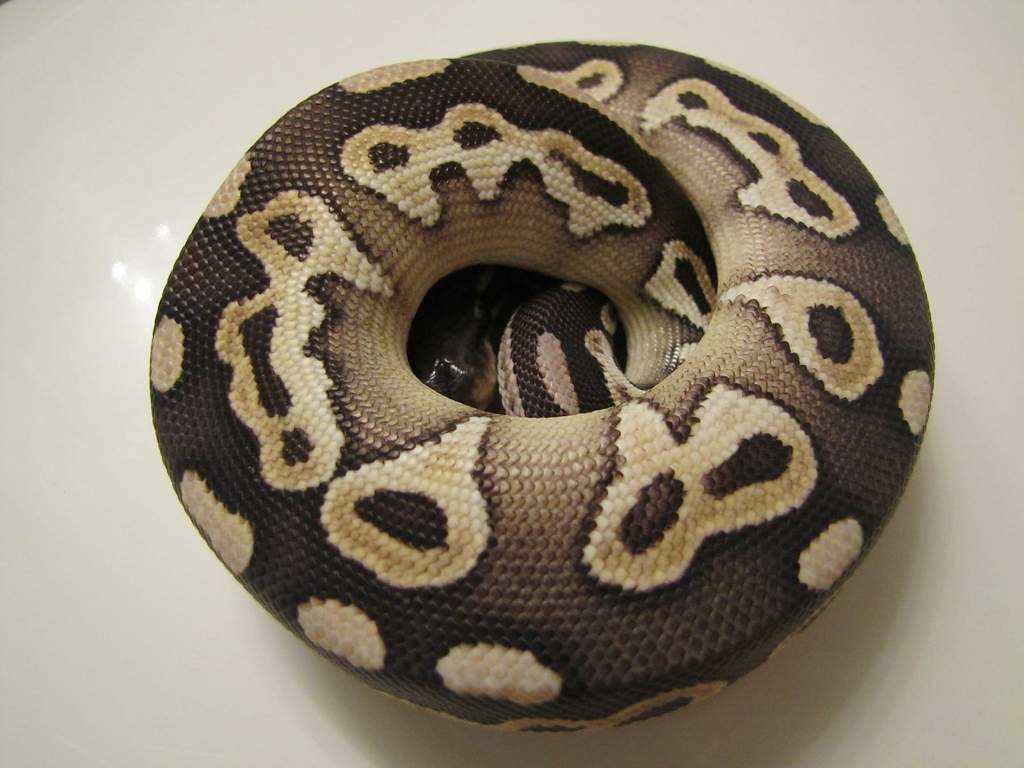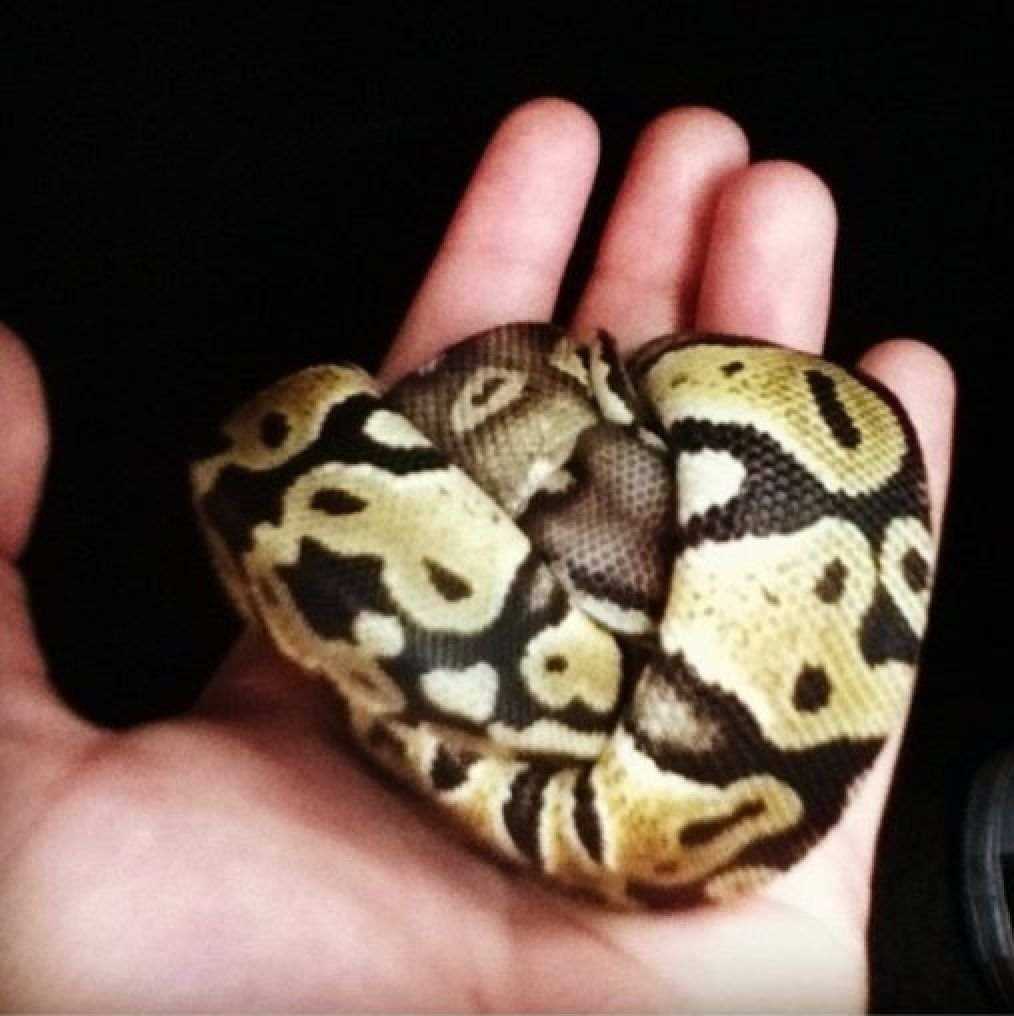
Balling up behavior in ball pythons is a common defense mechanism that can be seen when these snakes feel threatened or scared. When a ball python senses danger or fear, it will curl its body into a tight ball, protecting its head and sensitive underbelly. This behavior is instinctual and helps the snake to hide its vulnerable areas from potential predators.
Causes of Ball Python Balling Up Behavior
Defense Mechanism
Balling up is an instinctive defense mechanism that ball pythons use to protect themselves from potential threats. In the wild, these snakes often encounter predators, and curling into a tight ball helps to protect their vulnerable head and neck region. By hiding their head in the center of their coils, ball pythons can minimize the risk of injury while presenting a less vulnerable target to potential predators.
Additionally, when a ball python curls up into a ball, it can also hide its vibrant patterns and colors, which may help it blend in with its surroundings and avoid detection. This is especially beneficial when the snake is in an exposed or unfamiliar environment.
Natural Behavior
Balling up is not always a response to a potential threat. It is also a natural behavior that ball pythons engage in for several other reasons. For example, balling up can help them conserve body heat. By curling into a tight ball, a ball python can reduce the surface area exposed to the environment, minimizing heat loss. This behavior is particularly evident in cooler temperatures or when the snake is preparing to shed its skin.
Additionally, balling up can also serve as a way for ball pythons to feel secure and provide them with a sense of comfort. Reptiles, in general, have a preference for confined spaces because it gives them a sense of protection. In captivity, providing hide boxes or shelters for ball pythons can help recreate this natural behavior and give them a safe space to retreat to when they feel stressed or overwhelmed.
Fear and Stress: Fear and stress are major contributing factors to ball python balling up behavior. These snakes are naturally shy and tend to retreat and seek shelter when they feel threatened. Any sudden loud noises, handling, or changes in their environment can induce fear and stress, causing them to curl into a defensive ball.
Protective instinct: Balling up behavior is a natural defensive instinct for ball pythons. In the wild, they use this behavior to protect themselves from predators by presenting a small and less vulnerable target. This instinct is deeply ingrained in their behavior and can be triggered easily when they feel threatened or insecure.
Causes of Ball Python Balling Up Behavior
There can be various reasons why ball pythons curl up into a tight ball:
Fear and Stress: Ball pythons are naturally shy and easily stressed reptiles. When they feel scared or threatened, they instinctively curl their bodies into a tight ball as a defense mechanism. This behavior helps protect their vulnerable head and neck areas.
Environmental Factors: A ball python’s surroundings can greatly influence its behavior. If the enclosure is too small, lacks hiding spots, or has other stress-inducing factors, the snake may resort to balling up as a way to seek security and reduce stress.
Solutions for Ball Python Balling Up Behavior
Providing a suitable habitat plays a crucial role in reducing balling up behavior in ball pythons:
1. Providing a Suitable Habitat: Make sure the enclosure is appropriately sized for your snake and includes multiple hiding spots to ensure they feel secure. Include vertically oriented branches or objects to enable climbing and provide a sense of exploration.
2. Handling Techniques: Proper handling techniques are essential to minimize fear and stress in ball pythons. Approach your snake calmly, avoid sudden movements, and support its body properly to make it feel secure during handling.
3. Building Trust and Bonding with your Ball Python: Spend time around your snake’s enclosure, talking softly to it, and feeding it. This will help the snake associate your presence with positive experiences and gradually build trust, reducing its stress levels.
Solutions for Ball Python Balling Up Behavior
Environmental Factors
One of the main causes of balling up behavior in ball pythons is their environment. If the habitat is not suitable, the snake may feel stressed or insecure. It is crucial to provide the snake with a spacious and properly equipped enclosure. Make sure to include hiding spots, branches, and adequate temperature and humidity levels.
Fear and Stress
Handling Techniques
To help your ball python overcome its fear and reduce balling up behavior, proper handling techniques are essential. Gradually introduce handling sessions to the snake and start with short durations. Use gentle and calm movements, supporting the snake’s body properly. Over time, the snake will become more comfortable and less likely to ball up.
Building Trust and Bonding with your Ball Python
Building trust and bonding with your ball python can also help reduce balling up behavior. Spend time near the snake’s enclosure, talking softly and moving slowly. This will help the snake become familiar with your presence and build trust. Offer the snake food directly from your hand to associate your scent with something positive. Regular and gentle interactions will help strengthen the bond between you and your snake.
Remember, every snake is unique, and it may take time for them to feel comfortable and stop balling up. Patience, consistency, and providing a suitable environment are key to helping your ball python overcome fear and exhibit healthier behaviors.
Creating a Suitable Habitat for Your Ball Python to Prevent Balling Up Behavior
There are several reasons why a ball python may exhibit balling up behavior. One of the main causes is fear and stress. Ball pythons are naturally shy and can easily feel threatened in unfamiliar or uncomfortable environments. This response helps them feel protected from potential predators in the wild.
Environmental factors:
Creating a suitable habitat for your ball python is crucial in preventing balling up behavior. Make sure the enclosure provides a sense of security and has enough hiding spots.
Temperature:
Ball pythons require specific temperature ranges to feel comfortable. Ensure that the enclosure has a warm side and a cool side, mimicking their natural habitat. Maintaining correct temperatures is vital for their overall well-being.
Humidity:
Hiding spots:

Provide multiple hiding spots for your ball python to retreat to. These can be in the form of caves, hollow logs, or other suitable hiding places. Hiding spots help the snake feel secure and reduce stress, preventing them from balling up.
Handling techniques:
Building trust and bonding with your ball python:
Spending time near the enclosure, talking softly, and offering food from your hand can help build trust with your ball python. This will help the snake associate your presence with positive experiences, reducing fear and stress. A bond of trust between you and your ball python will significantly decrease the likelihood of balling up behavior.
Solutions for Ball Python Balling Up Behavior
1. Gentle and Patient Handling:
When handling a ball python, it is crucial to approach the snake calmly and confidently. Sudden movements or rough handling can trigger fear in the snake, causing it to curl up into a defensive ball. Take your time and handle the snake gently, allowing it to get comfortable with your presence.
2. Gradual Desensitization:
3. Use Proper Holding Techniques:
4. Avoid Overhandling:
Ball pythons are naturally shy and may become stressed if they are handled too frequently. Limit handling sessions to a few times a week and provide plenty of hiding spots in the enclosure for the snake to retreat to. This will give the snake a sense of security and reduce its need to ball up for defense.
5. Provide a Suitable Environment:
Ensuring that your ball python has a suitable habitat is essential for reducing stress and fear. Provide a properly sized enclosure with appropriate temperature and humidity levels, as well as hiding spots and climbing branches. A comfortable environment will help the snake feel secure and less likely to exhibit balling up behavior.
6. Building Trust and Bonding:
Establishing a bond of trust with your ball python takes time and patience. Spend time near the snake’s enclosure, talking softly to it and offering food. Avoid sudden movements or loud noises that may startle the snake. By consistently providing a calm environment, the snake will begin to associate your presence with safety and security, reducing its instinct to ball up in defense.
By following these solutions, you can help your ball python overcome its fear and stress, leading to a happier and more relaxed pet snake.
Building Trust and Bonding with Your Ball Python
When a ball python feels threatened or fearful, it will instinctively ball up as a means of self-defense. This behavior allows the snake to protect its vital organs and vulnerable head from potential predators. It is crucial to create a safe and secure environment for your snake to minimize the triggers that may lead to balling up.
Building Trust and Bonding

The process of building trust and bonding with your ball python takes time and patience. Here are some tips to help establish a positive relationship with your snake:
1. Handling TechniquesWhen handling your ball python, it is essential to approach with calmness and confidence. Avoid sudden movements or loud noises that may startle the snake. Use a gentle touch and support the snake’s body to make it feel secure. Gradually increase the duration and frequency of handling sessions to help your snake become accustomed to human interaction. |
2. Providing a Suitable HabitatCreating an appropriate habitat is crucial for the well-being and comfort of your ball python. Ensure that the enclosure is properly sized, with hiding spots, branches, and other enrichments to mimic their natural habitat. A secure and comfortable environment will help minimize stress and promote a sense of security for your snake. |
With time, patience, and consistent positive interactions, your ball python will learn to trust you and feel more secure in its environment. Avoid forcing interactions or trying to handle your snake if it is displaying signs of fear or stress, as this can worsen the balling up behavior. Monitor your snake’s body language and always prioritize its comfort and well-being.

I’m Lena Adams—a product of an unconventional upbringing in the African wilderness. My father, a daring explorer of African wildlife, sparked my fascination with reptiles, a passion that intertwined with the tragic loss of my mother during an expedition, leaving an indelible mark on my life. Driven to understand the creatures that captivated my parents, I embarked on my journey, sharing insights about reptiles, frogs, and lizards on my website. Through my explorations and conservation efforts, I honour my family’s legacy while seeking connections—to the creatures, nature, and the mother whose presence I yearn to understand.
